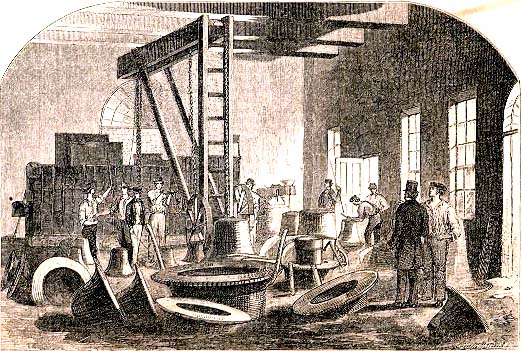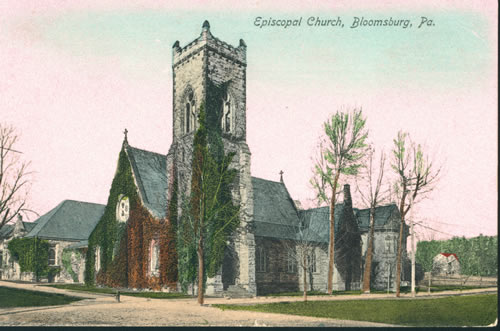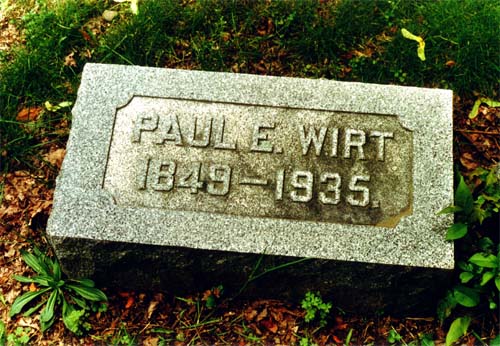
Emmanuel Billings carefully climbed the rickety stairs to the bell tower.
The pesky yellow jackets buzzed around his head and it was ghastly hot up here.
At least the heat felt good to his old knees, and if he didn’t provoke the
hornets, they didn’t pose much of a threat. He just hoped that this climb
wasn’t another wasted effort. Over the last few weeks, he had climbed these
stairs several times to ring the bell, but each time the climb had been in vain.
The Continental Congress was trying to ratify a Declaration of Independence in
the Hall below, but they were slow to reach an agreement. He should have waited
on the street and made the climb after the Declaration was signed, but his five-year-old
grandson, Jason, was just as pesky as the yellow jackets. Jason wanted to hear
the bell ring the instant the Declaration was signed, and Emmanuel would rather
suffer a whole swarm of stings than disappoint his grandson.
Once at the top of the stairs, Emmanuel sat on the window sill, and caught
his breath. He watched the street below, and every few minutes Jason would run
into view and yell up a message. Usually something like “Not Yet, they’re
still fighting.” Then he would run back to the door and peek in on the delegates.
Where did the boy find such energy?
Suddenly, Jason dashed into the street below, yelling up to him. “Ring!
Ring the bell grandfather, We are a country!” Emmanuel grabbed the rope
and pulled with all his might, tolling the news that there was now a new united
county, based on liberty. No bell ever sounded so sweet.

The above paragraphs are based on George Lippard’s 1847 short story,
“The Fourth of July” published in The Saturday Currier. The story
was printed as fiction, but it enthralled our young nation, that was hungry for
more heroes. The story spread and it was often reprinted as fact. It was this
story that made the bell famous as the Liberty Bell, and we still honor the bell
today. It is probably the most widely recognized bell in the world.

What makes the Liberty Bell so recognizable today is its crack. The bell,
ordered from London’s Whitechapel foundry, cracked on the very first ring.
The bell was quickly melted and recast by a local bell foundry. The sound suffered,
but the bell seemed a little more stable. Nevertheless, soon the bell cracked
several more times. It rang its last time on George Washington’s Birthday,
1846. For a long time no one understood just why bells cracked. All bells seemed
to suffer cracks, but the problem was more pronounced in Philadelphia since the
bell was frequently used; so much that the townspeople complained about the constant
bell ringing.
In July 1868 George R. Meneely solved the crack problem. The clapper he realized
always struck the same spot inside the bell, causing a slow metal fatigue. He
patented a bell rigging that allowed the clapper to rotate freely inside the bell,
thus significantly reducing cracks. To celebrate our Nation’s Centennial
in 1876, the cracked Liberty Bell was replaced with a nearly identical replica
made by the Meneely foundry and it still sits in Independence Hall belfry today.
The original bell was placed on public display in the courtyard below.
By now you must be wondering what this has to do with pens. Well, the Meneely
foundry cast another bell that is of interest to pen collectors. It still resides
in the St. Paul’s Episcopal Church belfry and rings out the psalms every
Sunday morning in the sleepy little town of Bloomsburg, Pennsylvania

This bell, nearly identical to the Liberty Bell, but on a smaller scale, was
presented to the church from legendary early pen maker Paul Esterly Wirt. Sadly,
few pen collectors recognize the name Wirt today, but from 1884 to 1900 Wirt out
produced and out sold all of the other pen makers combined. He not only created
innovations in fountain pen feed and filler designs, but he also created fabrication
innovations as well, and his model of production was quickly copied by other pen
smiths. Wirt was one of the first pen makers to aggressively advertise his pens
and make use of the celebrity endorsement, and with the world famous Mark Twain
swearing by the Wirt Pen, it was hard to go wrong. By 1900 Wirt had sold over
2 million pens.
But life wasn’t always so happy for Paul Wirt. In 1886, as Wirt was
preparing to defend his patents in court, his second son, Max Esterly, died of
sun stroke at the age of five months. In January 1889 Paul Wirt lost his 29-year-old
brother, Charles who was a superintendent of the pen company. A year latter, nearly
to the day, he lost his second daughter, seven-week-old Margery. Perhaps Wirt’s
greatest loss was that of his first son, 29-year-old Karl in 1921. Shortly after
Karl’s death, Wirt retired and then sold the pen company in 1925 to B. F.
Maize and Robert H. Knoor. The company slowly dwindled from the competition and
finally ceased production about ten years latter.

Of the four children born to Paul and his wife, Sara, only his first daughter,
Pauline, outlived him. Naturally, before the 1900’s infant mortality was
very high, and rare was a family that hadn’t lost a child. But the loss
of Wirt’s two children must have been hard on the family.

When Paul Wirt ordered the bell from the Meneely foundry, he asked for this
inscription to be placed on the bell:
To The Glory of God
Given to St. Paul’s Church
Bloomsburg PA Oct. AD 1891
By Mr. Paul E. Wirt and Sara
His Wife In loving Memory of
Their Deceased Infant Children.

Of the Big Three pen companies that started in the early 1900’s and
are still with us today, Waterman, Parker, and Sheaffer, one point is common among
them. The founders all had sons or nephews to carry on the business after them.
As a Wirt pen collector, I wonder how history might have played out differently
if Wirt’s sons had lived. We will never know, but if Wirt’s sons had
lived, surely more Wirt pen collectors would exist today.

For more information on Wirt pens, please visit www.kamakurapens.com
Special thanks to Ann Diseroad of Bloomsburg for the
photos.

Ron Dutcher has lived in Japan for over 15
years. He is a member of the Tokyo Pen Association, and has learned a great deal
from Japanese pen collectors. He sells a great many Japanese pens on ebay under
the name Kamakura-Pens, but his true love is for early American pens. He can be
contacted at rd@kamakurapens.com

|